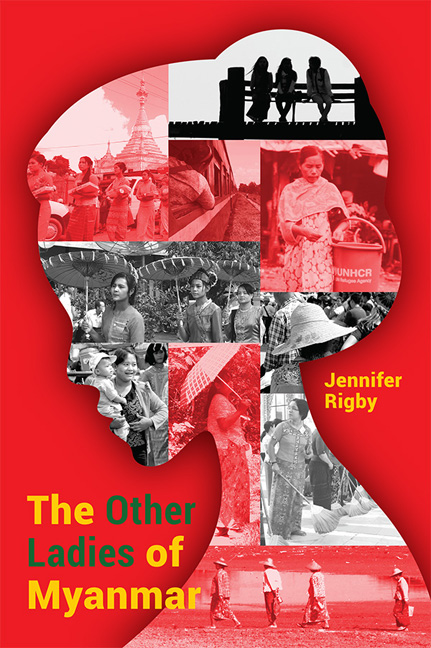Book contents
- Frontmatter
- Dedication
- Contents
- Preface
- Acknowledgements
- Introduction
- Timeline
- 1 The Activist: Cheery Zahau
- 2 The Feminist Buddhist Nun: Ketu Mala
- 3 The Survivor: Mi Mi
- 4 The Businesswoman: Yin Myo Su
- 5 The Environmental Campaigner and Princess: Devi Thant Cin
- 6 The Artist: Ma Ei
- 7 The Refugee Sexual Health Nurse: Mu Tha Paw
- 8 The Rohingya and Human Rights Champion: Wai Wai Nu
- 9 The Farmer: Mar Mar Swe
- 10 The Pop Star: Ah Moon
- 11 The Politician: Htin Htin Htay
- 12 The Archer: Aung Ngeain
- Conclusion
- About the Author
5 - The Environmental Campaigner and Princess: Devi Thant Cin
Published online by Cambridge University Press: 08 June 2019
- Frontmatter
- Dedication
- Contents
- Preface
- Acknowledgements
- Introduction
- Timeline
- 1 The Activist: Cheery Zahau
- 2 The Feminist Buddhist Nun: Ketu Mala
- 3 The Survivor: Mi Mi
- 4 The Businesswoman: Yin Myo Su
- 5 The Environmental Campaigner and Princess: Devi Thant Cin
- 6 The Artist: Ma Ei
- 7 The Refugee Sexual Health Nurse: Mu Tha Paw
- 8 The Rohingya and Human Rights Champion: Wai Wai Nu
- 9 The Farmer: Mar Mar Swe
- 10 The Pop Star: Ah Moon
- 11 The Politician: Htin Htin Htay
- 12 The Archer: Aung Ngeain
- Conclusion
- About the Author
Summary
WHEN I go to meet Devi Thant Cin, I get lost — even though she lives on one of the most famous roads in Yangon, metres away from the Buddhist symbol of a nation, the shining, golden Shwedagon Pagoda, and next to the tomb of the country's last queen.
I call in a panic, and a small, friendly woman appears at a gate close to a small stall selling 3-in-1 coffee sachets. She waves at me from behind a grinning betel nut vendor.
“Come in, come in, here I am,” she beams, taking my arm and ushering me in to her two-storey half-wooden, half-concrete house. It's homely, but basic; you go in through a part-glass lean-to, and then snaking wooden stairs lead past boxes of papers and shelves groaning with pictures, rocks, and small statues.
In a way, that's what threw me in the first place. You see, before I met Devi Thant Cin, I already knew she was a princess. She is descended from Myanmar's last royals, King Thibaw and Queen Supalayat, who were deposed and exiled by the British colonialists nearly 150 years ago in 1885.
I'd been told that her family had been given the house by the former British governor of Myanmar (then Burma), Sir Reginald Hugh-Dorman Smith, in the 1940s. Given the general British respect for royalty (once they have stripped them of any actual power, of course, and at the safe distance of a few generations), I'd assumed that the descendants would have been given something a bit more, well, palatial.
Devi thinks this is funny.
“I have lived here for fifty years,” she says simply. “It was given to my grandfather for religious purposes, to look after the tomb of Queen Supalayat [the last queen of Burma, and Devi's great-grandmother].”
She shares the house with two other royal descendant families. Her attitude gives me a clue about her general attitude towards her glittering genealogy. It's a fact, and she is proud of it, but she doesn't really expect anything because of it; and in fact, she would be horrified if she was treated differently because of it.
- Type
- Chapter
- Information
- The Other Ladies of Myanmar , pp. 47 - 58Publisher: ISEAS–Yusof Ishak InstitutePrint publication year: 2018

